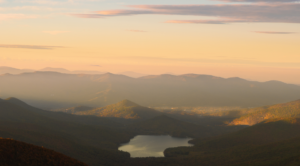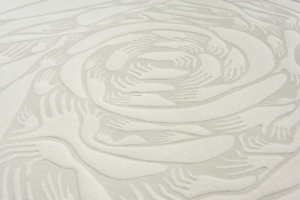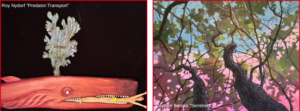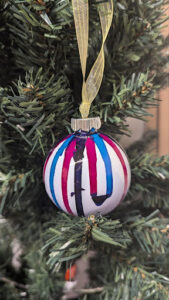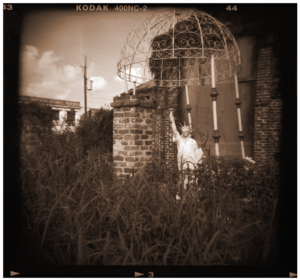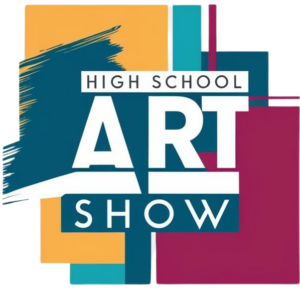Soul of Appalachia – Perspectives from Western North Carolina
- Home
- Soul of Appalachia – Perspectives from Western North Carolina
Featuring the work of 18 Western North Carolina Artists
Small communities across Appalachia have served as havens for artists for generations. From the traditional crafts of Penland to the avant-garde art of Black Mountain College and the murals and makers of Asheville’s River Arts District, artists gathered and flourished.
In the wake of Hurricane Helene, Western North Carolina demonstrated a generosity, resilience, and creativity that inspired many across the region and beyond. Those who have roots in the area understand it is the Appalachian way. Artists, craftspeople, makers, and families are the Soul of Appalachia.
Join The Art Gallery at Congdon Yards as we celebrate the spirit of Appalachia and honor Western North Carolina-based artists impacted by Helene.
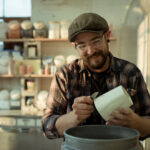
Anderson creates functional porcelain ceramics that push the boundaries of traditional pottery. Inspired by nature, science, architecture, and mythology, Anderson combines wheel-thrown and slip-cast techniques with modular molds and slipwork to bring his dynamic forms to life. Working under the moniker Moon Hand Pottery, he uses a vibrant, prismatic color palette to craft pieces that are both functional and visually striking.
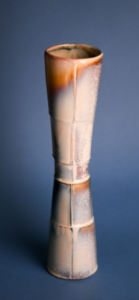
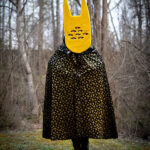
Asa’s work exists in the subterranean spaces between memory, dreams, and imagination. There is an architecture that connects these territories — a collective subconscious of creativity, which the artist explores by way of symbolism and mythology. Following this process, Asa often finds both personal and universal meaning and resonance in a finished piece begun with simple inspiration, unrestrained by elaborate intention.
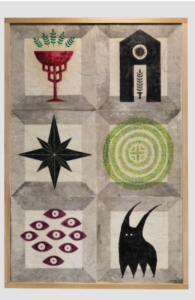

Bryant is an abstract, figurative artist focusing on relief printmaking. Her work explores themes of human connection, drawing inspiration from moments of spiritual and physical synergy. Through this exploration, Bryant captures the essence of acceptance, empathy, and healing, reflecting the beauty and complexity of relationships.
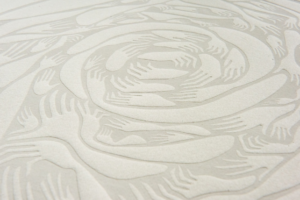
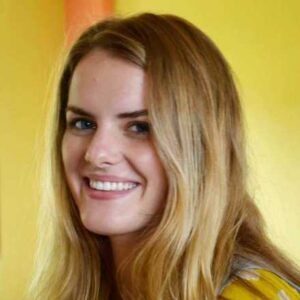
Buckner is an interdisciplinary artist and educator exploring the boundaries of painting, language, textile patterning, new media, and emerging modes of teaching and learning.
The works in this exhibition reflect Buckner’s deep interest in textiles and quilting traditions. Her focus centers on a single quilt pattern known by a wide range of names, including log cabin, log house, rail fence, and chevron log cabin. All of these names describe the same pattern which begins with a small piece of fabric in the center and grows in a spiral as fabric strips are added.
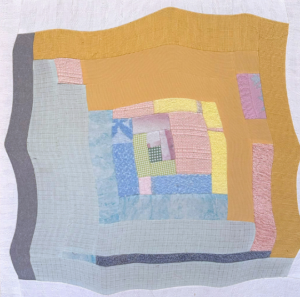
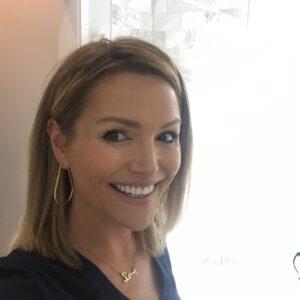
Capua brings her background in mixed-media art and career as a psychotherapist to her work in digital collage. These dual paths allow her to explore themes of narrative, memory, and the sacred, bridging the organic with the unconscious. Capua uses the malleability of the digital medium to create worlds that feel both microscopic and vast, reflecting the sacred geometry found in both dust particles and galaxies—each containing multitudes.

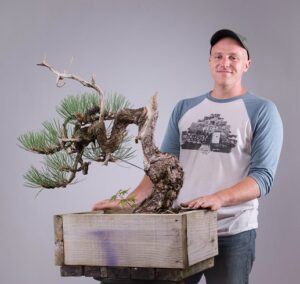
Coffey’s bonsai work blends traditional Japanese aesthetics, rugged American forms, and whimsical styles into an avant-garde interpretation of the traditional plant-based art form.
Coffey trained during a multi-year apprenticeship under Junichiro Tanaka, fourth-generation owner of Aichien Bonsai Nursery in Nagoya, Japan. Upon returning to the U.S., he interned at the National Bonsai & Penjing Museum in Washington, D.C., under former curator Jack Sustic.
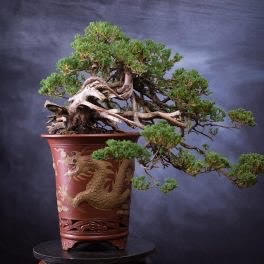

Crowe draws inspiration from the rural landscapes of her western North Carolina home capturing fleeting moments that reflect the region’s beauty. Her deliberate printmaking process embraces mindfulness, inviting both planned intention and unexpected outcomes. This slower, handmade approach creates textures and imperfections that lend each piece its own character.
Crowe’s work serves as a bridge between the natural world and personal experience. Each print invites viewers to reconnect with nature and explore their own memories and stories. By capturing the ephemeral — moments of light, shadow, and quiet beauty — Crowe creates works that encourage reflection and connection.
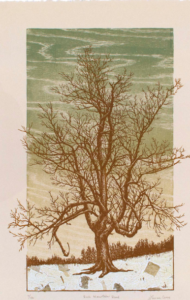
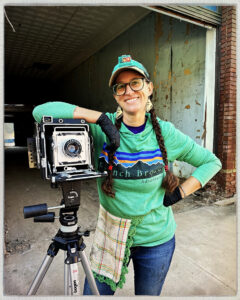
A week before the storm, our community felt vibrant and alive.
Marshall, NC, was forever changed by Hurricane Helene, as the river’s relentless floodwaters destroyed buildings, businesses, and treasured spaces. For weeks, residents dug out their town from the muck while documenting the devastation in real time. Photographer Sarah Jones Decker turned to the wet plate collodion process, building a makeshift darkroom in her Subaru and creating a series of tintype portraits—evoking technology similar to the flood of 1916.
The black-and-white images form a time capsule of resilience, documenting artists, workers, and dreamers who embody the heart of Marshall. Each portrait was created collaboratively, free of charge, as Jones Decker invited subjects to choose their locations and share their stories. The resulting work serves as both a collective memory and a tangible symbol of hope, reflecting the quiet strength of a town navigating its rebuilding and reimagining.
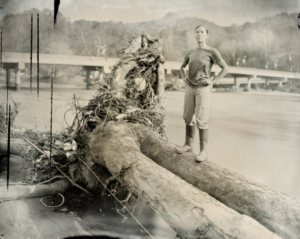
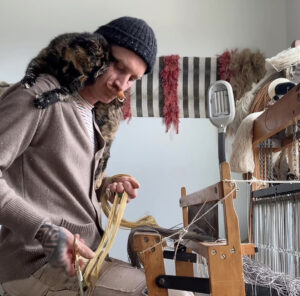
Goss’s practice blurs the boundaries of art, craft, and design. His work centers on traditional backstrap weaving — a method used since the Bronze Age — tying his art to ancient processes and Indigenous American cultures. Viewing the Earth as the ultimate art supply store, Goss responsibly forages materials like barks, nuts, food waste, and rusted objects for natural dyes. Sustainability is central to his practice; his materials are designed to be biodegradable and leave no toxic trace.
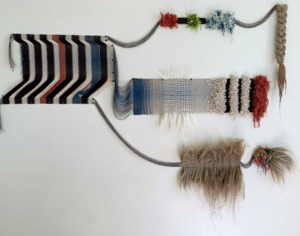
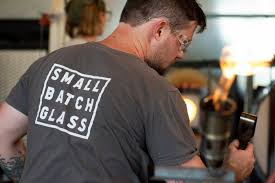
Holman grew up in San Francisco and discovered glassblowing at 16 through Public Glass, a local arts nonprofit. Drawn in by the dynamic community of artists, the physicality of the medium, and a fascination with the mesmerizing molten material, he began pursuing a career as a glass artist. He earned his BA in studio art with a focus in glass from Centre College in Kentucky.
After graduating, Holman relocated to Asheville, where he worked as a professional glass artist for six years, collaborating with studios and independent artists while developing his own work. In 2022, he began the process of opening his own studio, Small Batch Glass, which became publicly operational in February 2023.
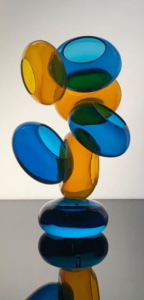
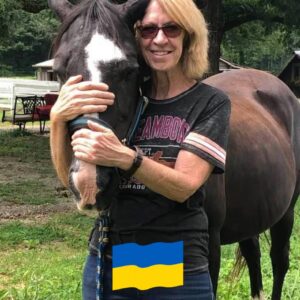
Jaskevich’s mystical stone sculptures explore the balance between the conscious and subconscious, the ancient and modern, and the symbolic and literal. As a direct carver, Jaskevich draws directly onto the stone, allowing her hands and tools to follow the creative process as it unfolds.
Jaskevich’s inspiration often begins with the human form. A piece of wood may suggest drapery, or a broken stone might resemble a silhouette, sparking an exploration of shape and gesture. Her intuitive process embraces discovery, blending deliberate thought with unconscious creativity.
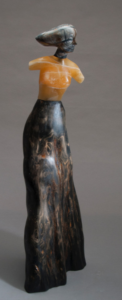
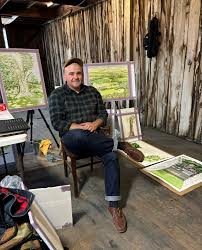
Jehly was born in Santa Rosa, CA. He received his BA in printmaking at Sonoma State University in 2006 and MFA in printmaking from Columbia University in 2011.
He currently works primarily in watercolor though his practice encompasses acrylic and spray paint as well as mixed media. He takes inspiration from the surrounding landscapes throughout Western North Carolina. These paintings confront the devastation wrought by Hurricane Helene in Asheville, NC. The work documents the ravaged and now unfamiliar landscape through firsthand observations, photographs, and memories. Objects and landmarks transform into menacing heaps, swooning trees adorned with plastic and metal detritus, vehicles rendered into muddied, skeletal remains. The painted images emerge like the rubble itself, both recognizable and falling into visual limbo.
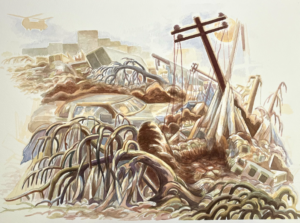
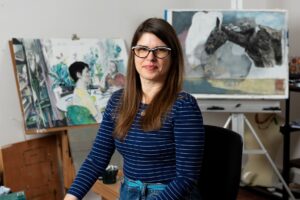
Johnson’s work reflects her deep ties to her Appalachian roots and the dualities of her upbringing. Her art explores themes of generational trauma, healing, and memory, rooted in the complex realities of coal mining communities.
Johnson’s mark-making process is rhythmic and meditative, uncovering the beauty and individuality of lives often misunderstood. By holding space for grief and healing, her work invites viewers to see beyond stereotypes and honor the unspoken stories of Appalachian communities.
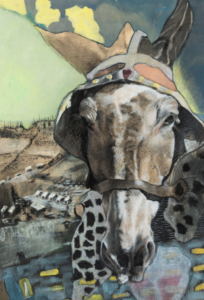
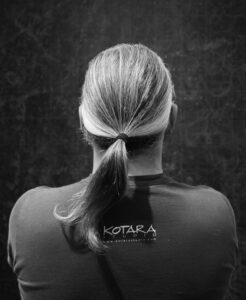
Kotara’s mixed-media practice explores the manipulation and interpretation of space. Rooted in a fascination with structure, networks, and abstraction, Kotara creates works that engage both two- and three-dimensional space. Layers of forms, symbols, and visual elements challenge viewers to find connections within complexity.
Kotara’s work pushes traditional boundaries, activating both real and illusionary depths of field. His compositions weave personal interpretations, vague stimuli, and visual entanglements into dynamic narratives that encourage deeper engagement.
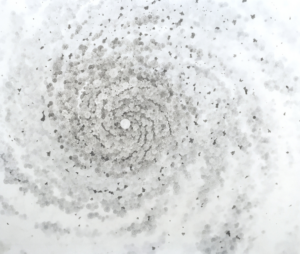
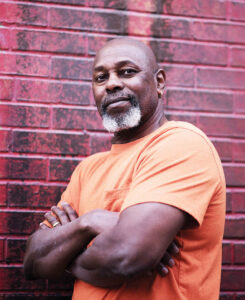
Pearson believes art is a powerful tool for healing. In his work juxtaposing the devastation of Hurricane Helene with depictions of children at play, he explores themes of resilience, joy, and hope. Children represent a potential for a brighter future.
Pearson is an award-winning artist with over 45 years of professional experience. His artistic journey began at age 4, eventually leading him to Jackson State College (B.S., 1969) and professional training at the Art Students League of New York, where he studied under a full scholarship for five years. After serving in the Army as an Illustrator, he worked at Stennis Space Center in Mississippi while further refining his skills. Pearson later earned a Master of Education from William Carey College, also under full scholarship, and has since received numerous grants.

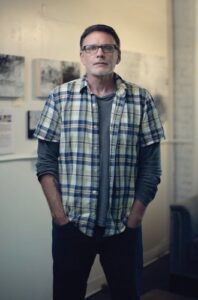
Roux works primarily in oils but also creates drawings and monotypes. Using nature as his subject, he explores not only natural forms but also how we experience the world around us. In an era where we encounter more images daily than at any other time in history, Roux examines how the language of imagery influences our perception of the natural world. He views all images as windows—with predetermined edges, sizes, and layers of information—and seeks to explore these parameters within his work.
Recently, Roux has focused on landscapes, clouds, water, and trees, combining representational approaches with elements of abstraction. Areas of marks and flourishes serve as reminders that his pieces are not the things they depict but instead reflections of the experience of seeing them.
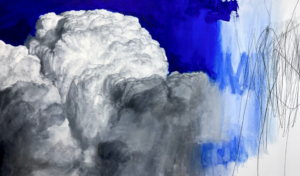
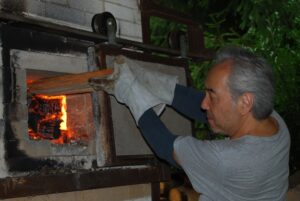
Born in Osaka, Japan, Satake moved to the U.S. in 1981 and established himself as both a musician and a potter. After relocating to North Carolina in 2003, Satake founded Akira Satake Ceramics and embraced pottery as his primary artistic passion.
For Satake, creating pottery is a collaboration between artist, clay, and fire. He draws inspiration from natural forces — wind-sculpted sands, weathered rocks, and patinated walls — seeking to reveal the beauty inherent in randomness. Fire plays a critical role, transforming the clay in unpredictable ways that Satake both embraces and celebrates.
Through his work, Satake honors the natural world and the imperfect beauty of the handmade. Each vessel reflects a dialogue between intention and chance, inviting viewers to appreciate the simplicity and depth found in forms shaped by both human hands and natural forces.
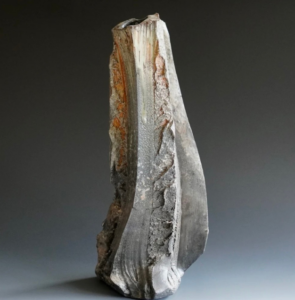
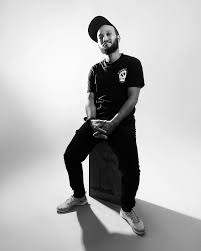
At age 20, with no prior experience, Tejeda began working for a small print and design firm in Fort Lauderdale, FL. Immersing himself in the tactile nature of print, he spent eight years as a pre-press technician before shifting his focus to design and photography. In 2021, after years of freelancing and a role as Senior Production Artist at an Asheville print firm, Ricardo launched Show and Tale Creative.
Through Show and Tale Creative, Ricardo is recognized for ethereal, dreamlike landscape photography. Often drawing inspiration from his favorite films, his images embody a cinematic quality while calling for environmental conservation. For Ricardo, photographing nature is both a personal exploration and a vision of a world where humans exist harmoniously with the environment, leaving it better for future generations.
